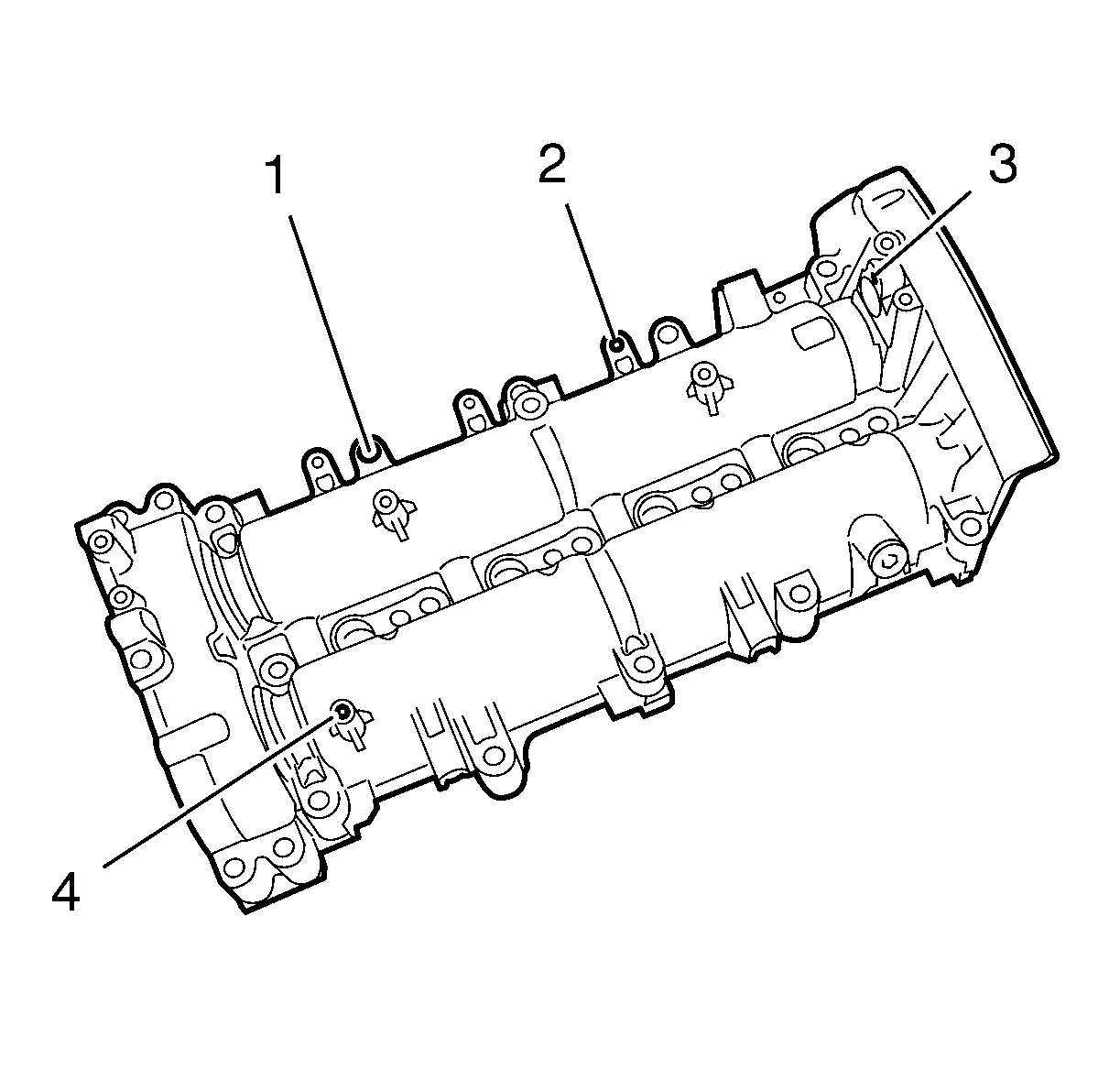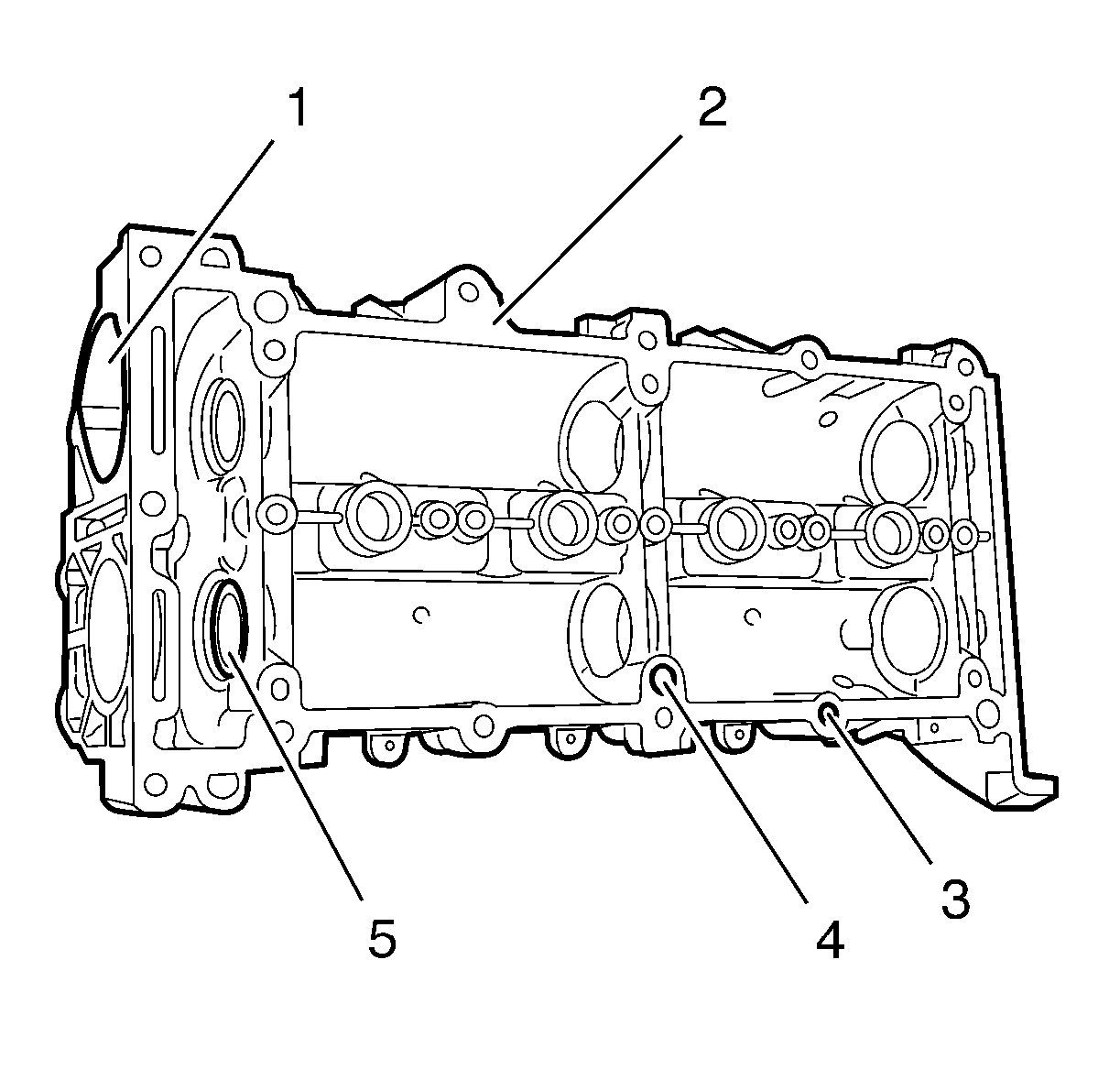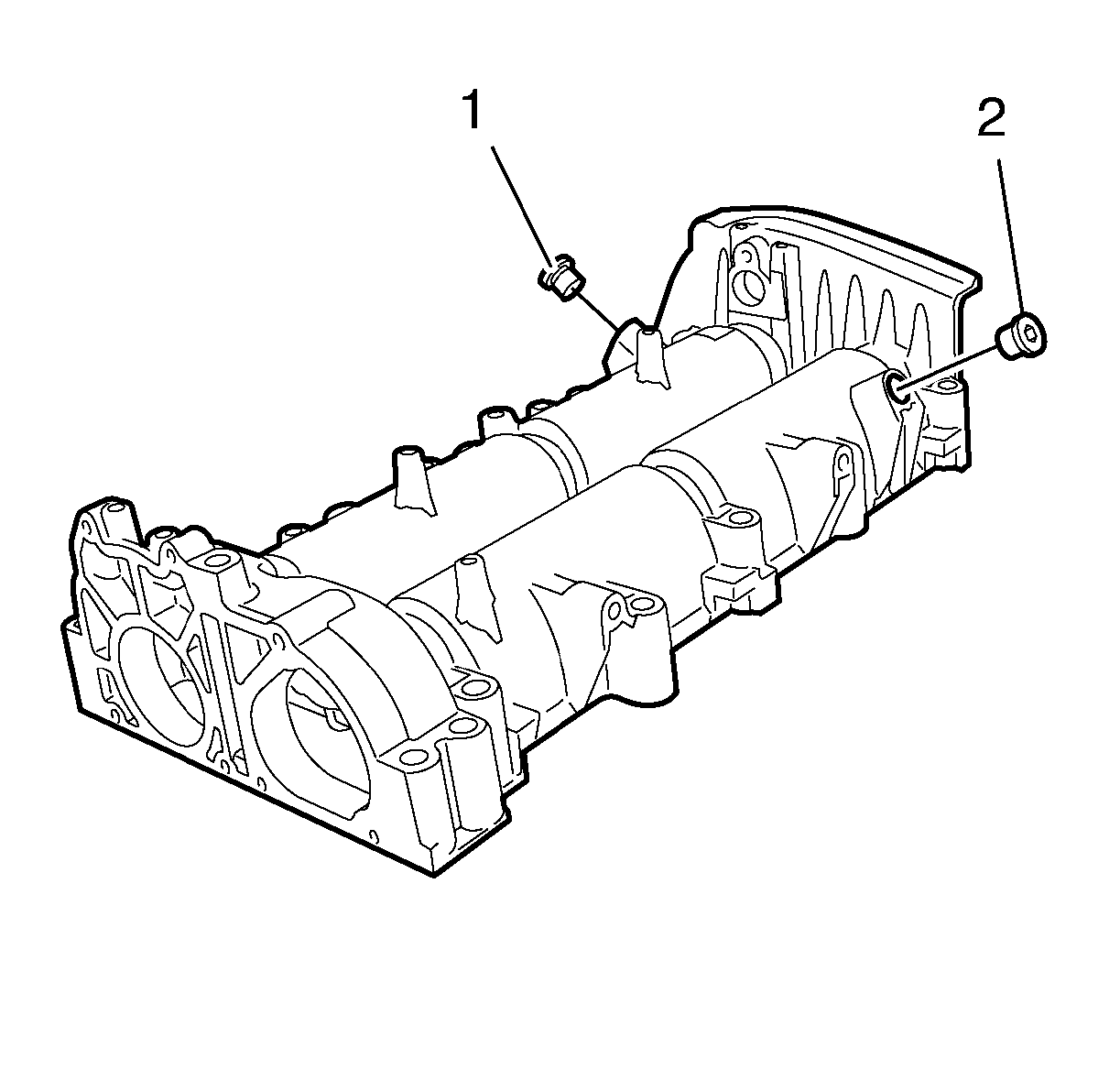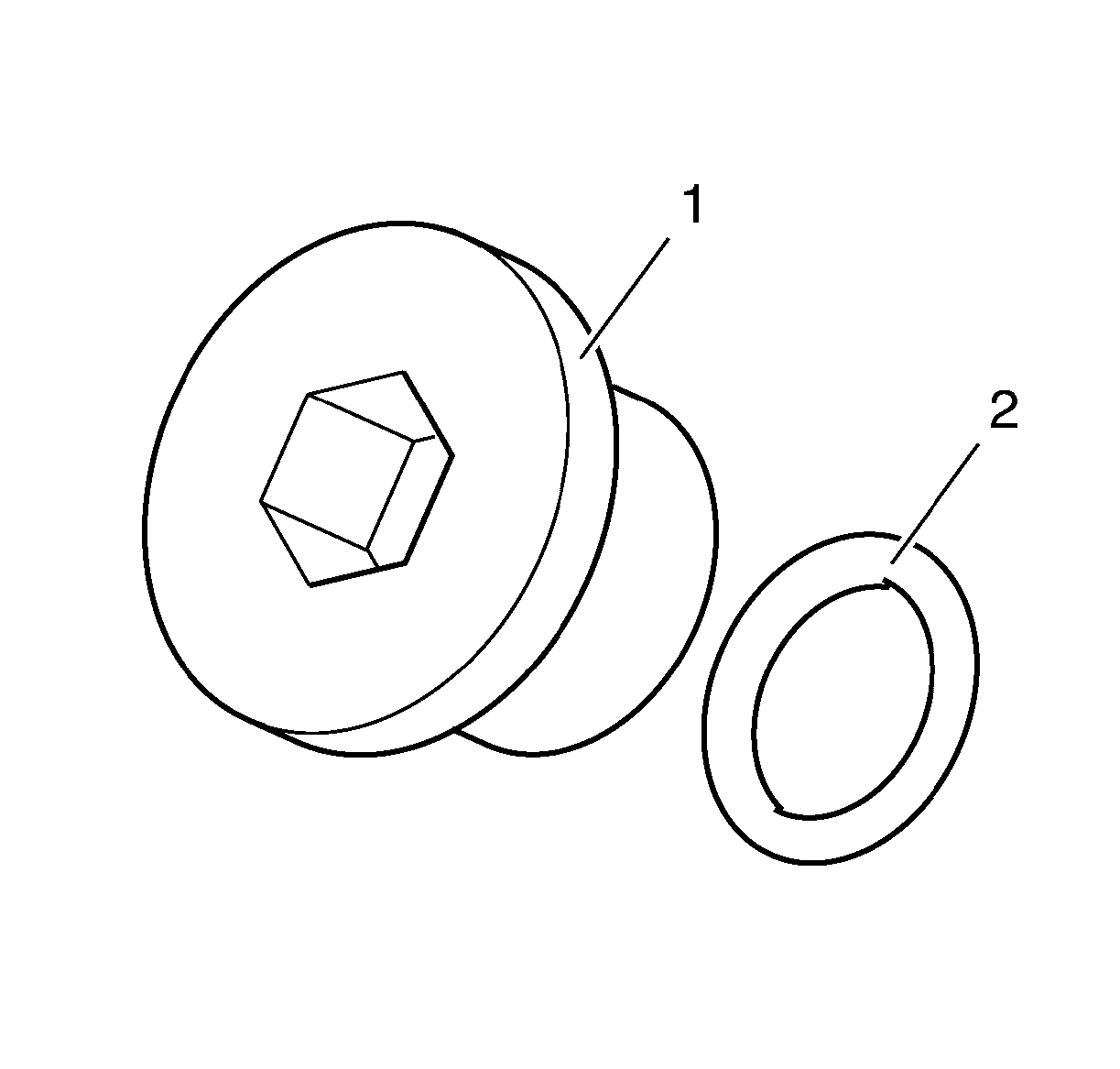Cleaning Procedure
- Clean the camshaft covers in solvent.
Warning: Refer to Safety Glasses and Compressed Air Warning in the Preface section.
- Dry the camshaft covers with compressed air.
Inspection Procedure
- Inspect each camshaft cover for the dents or damage to the exterior. A dented or damaged camshaft cover may:
| • | Affect crankcase ventilation |
| • | Interfere with the camshafts |
| • | Interfere with the ignition coil sealing |
| • | Allow water or condensation to enter the engine |

- Inspect the exterior of the camshaft cover for the following conditions:
| • | Damage to the camshaft cover bolt holes (1 and 2) |
| • | Damage to the camshaft sensor mounting hole (3) |
| • | Damage to the under pressure hose bracket bolt holes (4) |

- Inspect the interior of the camshaft cover for the following conditions:
| • | Inspect the camshaft cover bolt holes (3 and 4) |
| • | Inspect the camshaft cover for cracks, casting imperfections or damage (1, 2 and 5). |
PVC Orifice Replacement

Note: If the PCV orifice is damaged or plugged and cannot be cleaned out, the PCV orifice can be replaced.
- Remove the old PCV orifice by gripping the neck of the orifice with pliers and twisting and pulling out of the right camshaft cover.
- Install the NEW PCV orifice into the right camshaft cover. After insertion, twist the PCV orifice in order to eliminate any vertical leak paths in the sealant.
PVC Fitting Replacement

Note: If the PCV fitting is damaged or plugged and cannot be cleaned out, the PCV fitting can be replaced.
- Remove the old PCV fitting.
- Install the new PCV fitting (1) with a NEW O-ring (2).




